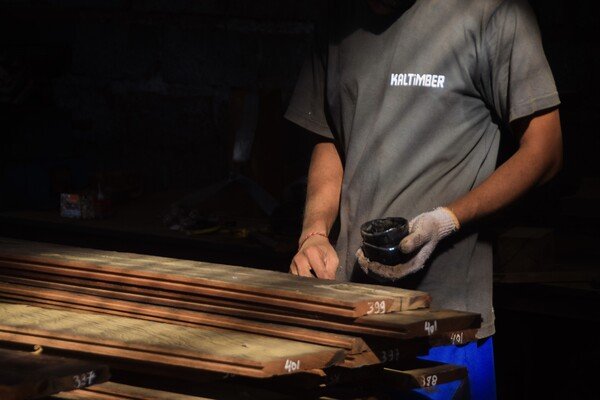At Kaltimber, we take pride in our unwavering commitment to sustainability and the rejuvenation of reclaimed wood for decking and flooring. We firmly believe that every piece of wood has a unique story to tell and deserves a second chance to shine.
In this article, we will delve into our passionate dedication to sustainability, our meticulous process of reclaiming wood, and the myriad benefits it offers not only to our environment but also to homeowners seeking distinctive, eco-friendly solutions for their spaces.
Sustainability: Our Core Value
At the heart of Kaltimber's mission lies a profound conviction that sustainability is not just a choice, but a responsibility. We recognize the far-reaching consequences of deforestation, which include habitat loss, exacerbation of climate change, and the detrimental effects on biodiversity. In response, we have made it our duty to mitigate these impacts by salvaging and repurposing wood that would otherwise go to waste.
Reclaiming Wood: A Second Chance to Shine
Our process of reclaiming wood involves the careful recovery of lumber from old structures such as buildings, factories, and more, that have reached the end of their usefulness. This wood, which would otherwise be discarded, undergoes an extensive and transformative journey, ensuring that "no wood is left behind." Here's how we make it happen:
1. Sourcing: Kaltimber collaborates with experienced teams to identify and source reclaimed wood from various locations. These sources include historic barns, disused factories, retired ships, and even old jetties. Each piece of wood carries its own history and character, adding depth to our reclaimed wood collection.
2. Restoration: Once in our possession, reclaimed wood goes through a meticulous restoration process. We remove nails, clean, and, when necessary, treat the wood to meet our uncompromising standards of quality and durability.
3. Craftsmanship: Our skilled artisans take pride in transforming reclaimed wood into stunning decking and flooring products. Whether you desire a rustic, weathered look or a more polished finish, our craftsmanship ensures that every piece is a work of art.
Environmental Benefits
Reclaimed wood offers numerous environmental advantages that resonate with our commitment to sustainability:
1. Reduced Deforestation: By choosing reclaimed wood, you join us in the fight against deforestation, reducing the demand for fresh timber and helping to preserve essential ecosystems.
2. Lower Carbon Footprint: The traditional process of harvesting, processing, and transporting new wood can have a substantial carbon footprint. In contrast, reclaimed wood requires significantly fewer resources and results in lower greenhouse gas emissions.
3. Preservation of History: Each piece of reclaimed wood is a living testament to history, preserving the stories and character of the past. This cultural heritage adds an invaluable dimension to your living spaces.
Benefits for Homeowners
Selecting Kaltimber's reclaimed wood products for your home brings you numerous advantages:
1. Unique Aesthetic: Reclaimed wood imparts a distinctive and authentic character to your space that cannot be replicated by new wood. It adds warmth and a touch of history, making your surroundings truly special.
2. Durability: Reclaimed wood often boasts greater density and durability than new wood, making it an excellent choice for high-traffic areas like decks and floors.
3. Eco-Friendly Choice: By choosing reclaimed wood, you not only enhance your living spaces but also align your values with your lifestyle, contributing to a more sustainable and environmentally responsible future.
At Kaltimber, our unwavering commitment to sustainability and the art of reclaiming wood showcases our dedication to responsible business practices. By salvaging and repurposing wood that would otherwise go to waste, we not only reduce our carbon footprint but also breathe new life into each piece of wood, allowing it to shine once again. Our reclaimed wood solutions for decking and flooring prove that sustainability and style can coexist harmoniously, ensuring that, indeed, "no old wood is left behind, only the endangered trees are ."






